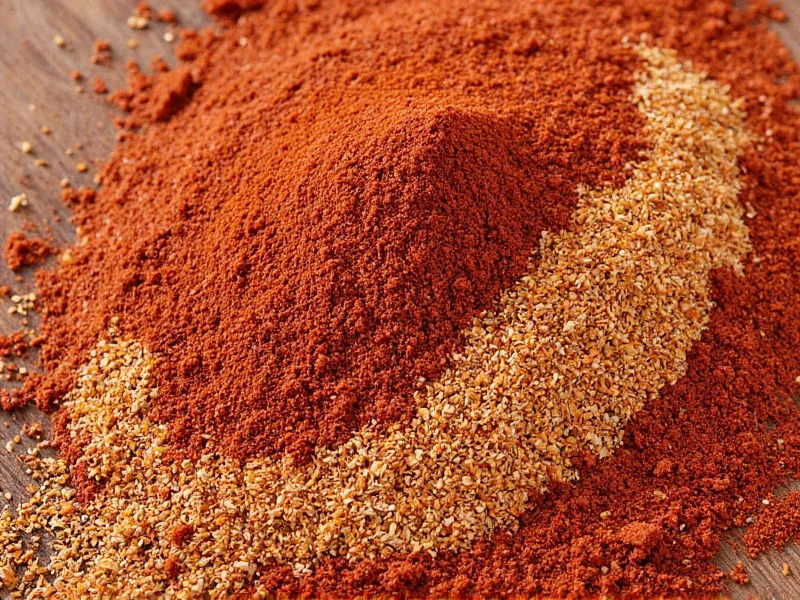Sumac, with its vibrant red color and tangy lemon-cranberry flavor, is a staple in Middle Eastern and Mediterranean cooking. When you're out of this unique spice but need to finish your recipe, knowing effective sumac spice substitutes becomes essential. This guide provides practical, tested alternatives that maintain the integrity of your dishes without compromising flavor.
Understanding Sumac's Unique Flavor Profile
Before selecting a substitute, it's crucial to understand what makes sumac special. This dried berry powder offers a distinctive tartness without the liquid content of citrus, plus subtle earthy notes and beautiful color. Unlike lemon juice which adds moisture, sumac provides dry tartness that won't alter your recipe's texture. The best sumac spice alternatives must balance acidity with appropriate dryness and complement Middle Eastern flavor profiles.
Top 5 Sumac Spice Substitutes Ranked
| Substitute | Ratio (vs 1 tsp sumac) | Best For | Limitations |
|---|---|---|---|
| Lemon juice + paprika | 1 tsp lemon juice + 1/4 tsp paprika | Fattoush salad, marinades, dips | Adds moisture; use less liquid elsewhere |
| Apple cider vinegar + paprika | 3/4 tsp vinegar + 1/8 tsp paprika | Dry rubs, spice blends, cooked dishes | Vinegar flavor noticeable in delicate dishes |
| Za'atar spice blend | 1 1/2 tsp za'atar | Bread dipping, roasted vegetables | Thyme flavor dominates; not ideal for salads |
| Amchoor (dried mango powder) | 3/4 tsp amchoor | Indian-Middle Eastern fusion dishes | Sweeter profile; lacks sumac's berry notes |
| Vinegar powder | 1 tsp vinegar powder | Dry rubs, seasoning blends, snacks | Hard to find; neutral color |
Detailed Substitute Analysis
Lemon Juice and Paprika Combination
This sumac alternative for fattoush salad works remarkably well because it replicates both the tartness and color. The lemon provides the essential acidity while paprika adds earthiness and that characteristic red hue. When substituting sumac in recipes calling for the dry spice, reduce other liquids by 1/2 teaspoon for every teaspoon of lemon juice used. This lemon juice instead of sumac ratio works best in dressings, marinades, and fresh salads where added moisture won't compromise texture.
Vinegar-Based Alternatives
Apple cider vinegar offers the closest pH match to sumac. For dry applications like spice rubs, use vinegar powder if available. When making sumac replacement for za'atar blends, combine 3/4 teaspoon apple cider vinegar with 1/8 teaspoon paprika per teaspoon of sumac. White wine vinegar works well in lighter dishes, while red wine vinegar better mimics sumac's color. Remember that vinegar substitutes lack sumac's subtle berry notes, so they work best in cooked dishes where flavors meld.
Za'atar as a Partial Substitute
Since za'atar contains sumac as a primary ingredient (typically 30-50%), it can serve as a substitute when you need sumac's flavor profile but not its pure form. Use 1.5 teaspoons za'atar for every teaspoon of sumac required. This works well for sprinkling on flatbreads or roasted vegetables but alters the flavor profile in traditional sumac-forward dishes like musakhan. Understanding how to substitute sumac in recipes that already contain za'atar requires careful adjustment to avoid overpowering thyme notes.
Recipe-Specific Substitution Guide
Not all sumac alternatives work equally well across different dishes. Your choice of sumac spice substitute should consider the specific recipe:
- Fattoush salad: Lemon juice + paprika combination (never vinegar, which overwhelms delicate greens)
- Grilled meats: Vinegar powder or apple cider vinegar mixture (holds up to high heat better)
- Rice dishes: Amchoor provides similar dry tartness without altering color
- Dips like muhammara: Stick with lemon juice substitute for authentic flavor balance
- Dry rubs: Vinegar powder offers the best texture match for sumac in spice blends
Common Substitution Mistakes to Avoid
Many home cooks make critical errors when seeking sumac spice substitutes. Don't use straight lemon zest, which lacks sufficient acidity. Avoid tamarind paste unless diluted, as its strong flavor dominates dishes. Never substitute sumac with regular paprika alone—it provides color but misses the essential tartness. When replacing sumac in traditional Middle Eastern cooking, remember that the best alternatives maintain both the pH balance and visual appeal that sumac provides.
Where to Find Authentic Sumac
While substitutes work in a pinch, having real sumac elevates your cooking. Look for it in Middle Eastern markets, bulk spice sections, or reputable online spice retailers. Quality sumac should be deep burgundy (not brick red) with a tart, slightly fruity aroma. Store it in an airtight container away from light to preserve its vibrant color and flavor for up to six months. For those committed to authentic Middle Eastern cuisine, keeping sumac in your spice rotation proves more valuable than constantly searching for sumac spice substitutes.











 浙公网安备
33010002000092号
浙公网安备
33010002000092号 浙B2-20120091-4
浙B2-20120091-4